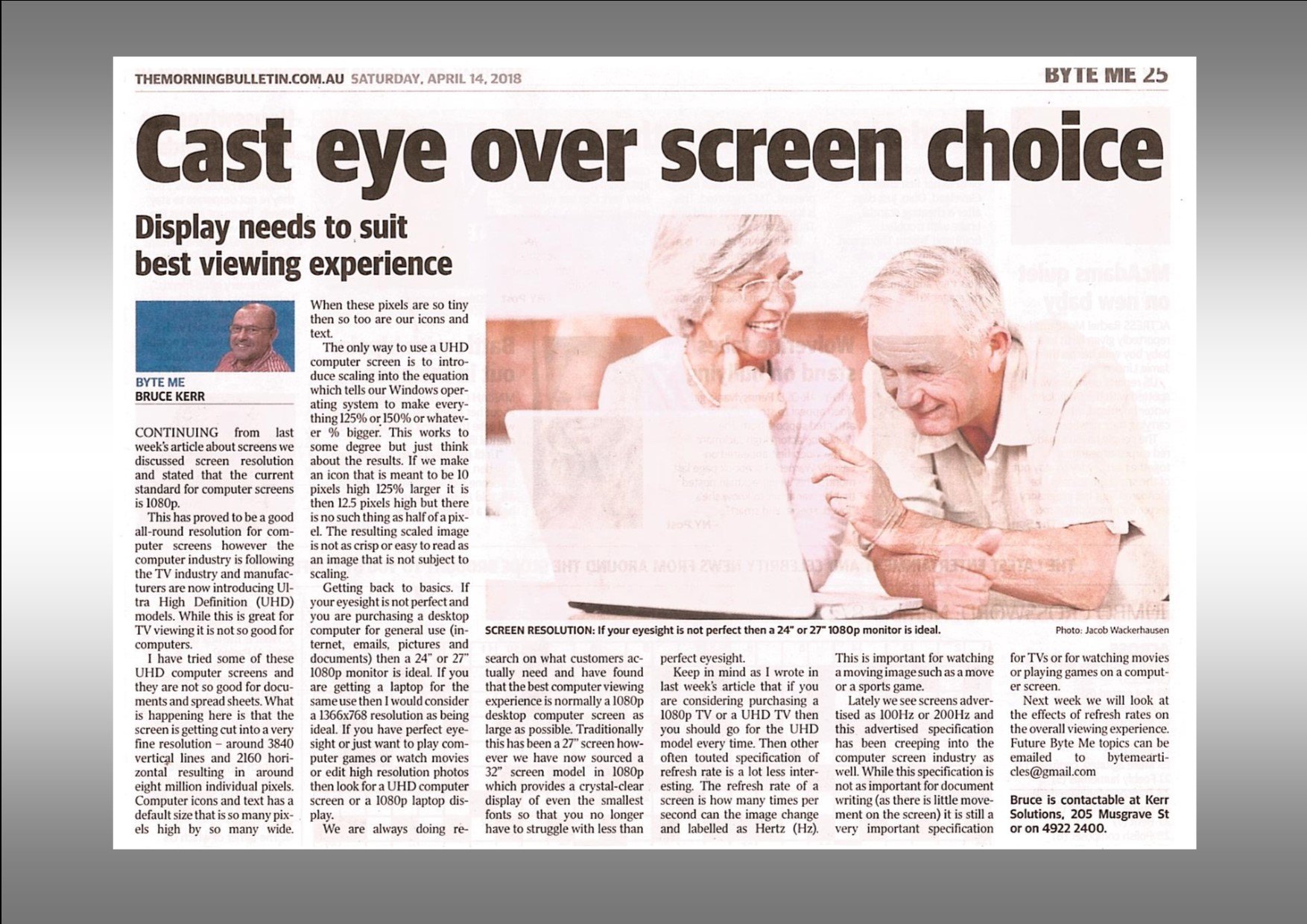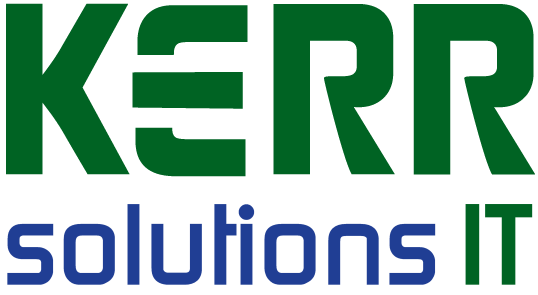14th April 2018
Cast Eye Over Screen Choice
Continuing from last weeks’ article about screens we discussed screen resolution and stated that the current standard for computer screens is 1080p. This has proved to be a good all-round resolution for computer screens however the computer industry is following the TV industry and manufacturers are now introducing Ultra High Definition (UHD) models. While this is great for TV viewing it is not so good for computers.
I have tried some of these UHD computer screens and they are not so good for documents and spread sheets. What is happening here is that the screen is getting cut into a very fine resolution – around 3840 vertical lines and 2160 horizontal resulting in around 8 million individual pixels. Computer icons and text has a default size that is so many pixels high by so many wide. When these pixels are so tiny then so too are our icons and text.
The only way to use a UHD computer screen is to introduce scaling into the equation which tells our Windows operating system to make everything 125% or 150% or whatever % bigger. This works to some degree but just think about the results. If we make an icon that is meant to be 10 pixels high 125% larger it is then 12.5 pixels high but there is no such thing as half of a pixel. The resulting scaled image is not as crisp or easy to read as an image that is not subject to scaling.

Getting back to basics. If your eye sight is not perfect and you are purchasing a desktop computer for general use (Internet, Emails, Pictures and Documents) then a 24” or 27” 1080p monitor is ideal. If you are getting a laptop for the same use then I would consider a 1366×768 resolution as being ideal. If you have perfect eye sight or just want to play computer games or watch movies or edit high resolution photos then look for a UHD computer screen or a 1080p laptop display.
We are always doing research on what customers actually need and have found that the best computer viewing experience is normally a 1080p desktop computer screen as large as possible. Traditionally this has been a 27” screen however we have now sourced a 32” screen model in 1080p which provides a crystal-clear display of even the smallest fonts so that you no longer have to struggle with less than perfect eye sight.
Keep in mind as I wrote in last weeks’ article that if you are considering purchasing a 1080p TV or a UHD TV then you should go for the UHD model every time. Then other often touted specification of refresh rate is a lot less interesting. The refresh rate of a screen is how many times per second can the image change and labelled as Hertz (Hz). This is important for watching a moving image such as a move or a sports game.
Lately we see screens advertised as 100Hz or 200Hz and this advertised specification has been creeping into the computer screen industry as well. While this specification is not as important for document writing (as there is little movement on the screen) it is still a very important specification for TV’s or for watching movies or playing games on a computer screen.
Next week we will look at the effects of refresh rates on the overall viewing experience.
Future Byte Me topics can be emailed to [email protected] and Bruce is contactable at Kerr Solutions, 205 Musgrave Street or on 49 222 400.
For more advice and assistance from Kerr Solutions, like and follow us on Facebook
